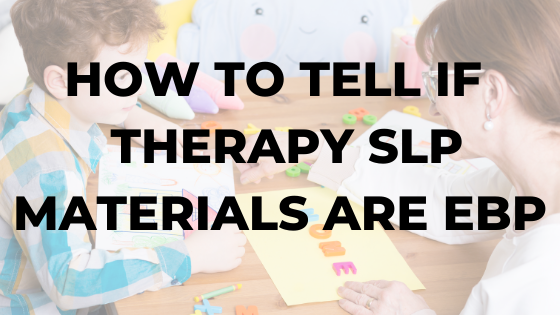How do I know if these therapy materials are “evidence-based”?
That’s a question I get a lot.
There’s a lot of pressure on clinicians to prove that what they’re doing is based on research…but there are so many products to sift through.
A lot of times it’s hard to tell if the product was made with EBP in mind.
The problem is that I see a lot of people feeling shame about using resources like Boom cards, TpT, Pinterest, or other common places that have materials.
It’s almost like those things are considered the “junk food” of therapy materials that people secretly love…but don’t want to admit that they’re using.
That’s why in this video, I share why if you’re asking the question “Is this product/set of flashcards/word list/etc. evidence based?”
you’re asking the wrong question. I’ll also share why if you’re using SLP-made or commercially available products…this is TOTALLY FINE.
It does not go against EBP!
BUT….Using certain products also does not guarantee that your therapy will be effective.
That’s why in this video, I talk a bit about how to evaluate products you’re purchasing and how to ensure you’re “doing EBP” when it comes to therapy.
In this video, I also mention an upcoming training where I’ll walk through my language therapy framework.
This is the framework I use to help SLPs I mentor ensure their therapy is effective, no matter what materials they’re using.
If you’re using the right strategies, you can lead and effective session with just a pencil and paper or basic word processing document!
The original training I mention in the video above may have passed, but there’s an ongoing version which you can register for here.
In this training I share:
1. The top mistakes EVERYBODY makes when it comes to language therapy, and WHY they are confusing your students and burning you out.
2. The SECRET I used to get BETTER RESULTS while doing LESS WORK that’s allowed me to help my students make major breakthroughs, while working a full-time SLP caseload and starting a business.
3. My evidence-based framework for creating a “domino effect” that will amplify your language therapy, and help you break through language therapy plateaus without spending hours planning or doing research.

